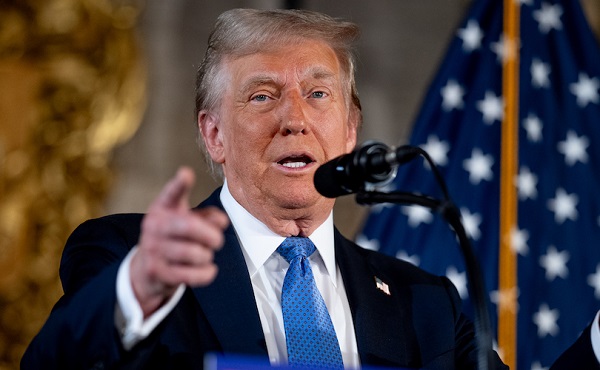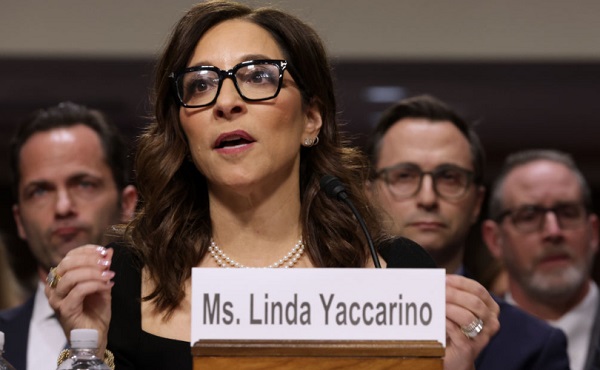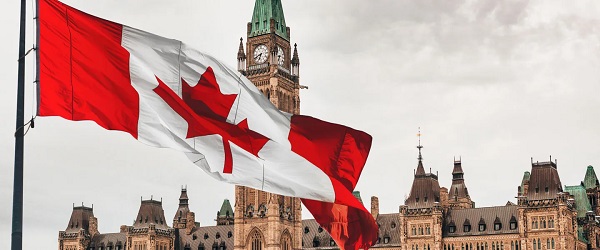Business
Canadians should understand costs of Ottawa’s Emissions Reduction Plan

From the Fraser Institute
By Julio Mejía and Elmira Aliakbari
On its first day in office, the Trump administration withdrew from the Paris climate agreement and began a regulation effort aimed largely at the energy sector. Meanwhile, the Trudeau government wants to reduce Canada’s greenhouse gas (GHG) emissions by at least 40 per cent below 2005 levels by 2030 to satisfy its commitment to the Paris agreement that Trudeau signed back in 2016.
But far from “building a strong economy” and making Canada “more competitive,” as the government claims, its Emissions Reduction Plan (ERP) will hurt Canada’s already struggling economy while failing to meet its own emission reduction targets.
In essence, the ERP has two components. The first one, and probably the most well-known to Canadians, is the carbon tax, which places a cost on fossil fuel use based on the amount of GHG emissions produced. The tax increased to $80 per tonne on April 1, 2024 and is scheduled to reach $170 per tonne by 2030.
The second—and least discussed—ERP component is the Trudeau government’s cascade of regulatory measures and mandates including requirements for fuel producers and importers to reduce the carbon content of their fuels, and electric vehicle mandates that require all new (light-duty) vehicles sold to be zero-emission by 2035 (with interim targets of 20 per cent by 2026 and 60 per cent by 2030). Additional measures include restrictions on fertilizer use in agriculture, emissions caps in the oil and gas industry, energy efficiency mandates for buildings, and more. With more regulations come increased costs to producers, and these costs are largely passed to consumers in the form of higher prices.
But aside from vague and unsupported claims that the ERP will strengthen the economy, the government hasn’t provided a detailed assessment of the plan’s costs and benefits. In other words, while the government has outlined how it plans to reduce emissions—carbon taxes, regulations, mandates—we still don’t know how much these policies will cost or how they will benefit Canadians.
But a recent study published by the Fraser Institute evaluate the economic and environmental impacts of the ERP.
According to the study’s projections, the carbon tax alone will cost $1,302 per worker annually by 2030, reduce employment by an estimated 57,000 jobs, and shrink the Canadian economy by 1.5 per cent compared to a scenario without the ERP. Considering that the economy grew just by 1.3 per cent in 2023, this cost is significant.
After you account for the ERP’s additional regulatory measures and mandates, the economic cost rises. By 2030, the full implementation of the ERP—which includes the carbon tax, regulatory measures and mandates—will shrink the economy by 6.2 per cent, cost Canadian workers $6,700 annually, and reduce employment by 164,000 jobs. Alberta, of course, will bear a large portion of these costs.
To make matters worse, the ERP will still fall short of the Trudeau government’s 2030 emission-reduction target. According to the study, the ERP will reduce Canada’s GHG emissions by about 26.5 per cent between 2019 and 2030, achieving only approximately 57 per cent of the government’s target. In short, Trudeau’s climate plan won’t deliver the economic growth or environmental impact the government anticipates.
Canadians should understand the costs of the Trudeau government’s Emissions Reduction Plan (ERP), which won’t achieve its targets while making Canadians worse-off. Any government should reject climate targets and policies where Canadians are merely an afterthought.
Business
Trump confirms 35% tariff on Canada, warns more could come

Quick Hit:
President Trump on Thursday confirmed a sweeping new 35% tariff on Canadian imports starting August 1, citing Canada’s failure to curb fentanyl trafficking and retaliatory trade actions.
Key Details:
- In a letter to Canadian Prime Minister Mark Carney, Trump said the new 35% levy is in response to Canada’s “financial retaliation” and its inability to stop fentanyl from reaching the U.S.
- Trump emphasized that Canadian businesses that relocate manufacturing to the U.S. will be exempt and promised expedited approvals for such moves.
- The administration has already notified 23 countries of impending tariffs following the expiration of a 90-day negotiation window under Trump’s “Liberation Day” trade policy.
Diving Deeper:
President Trump escalated his tariff strategy on Thursday, formally announcing a 35% duty on all Canadian imports effective August 1. The move follows what Trump described as a breakdown in trade cooperation and a failure by Canada to address its role in the U.S. fentanyl crisis.
“It is a Great Honor for me to send you this letter in that it demonstrates the strength and commitment of our Trading Relationship,” Trump wrote to Prime Minister Mark Carney. He added that the tariff response comes after Canada “financially retaliated” against the U.S. rather than working to resolve the flow of fentanyl across the northern border.
Trump’s letter made clear the tariff will apply broadly, separate from any existing sector-specific levies, and included a warning that “goods transshipped to evade this higher Tariff will be subject to that higher Tariff.” The president also hinted that further retaliation from Canada could push rates even higher.
However, Trump left the door open for possible revisions. “If Canada works with me to stop the flow of Fentanyl, we will, perhaps, consider an adjustment to this letter,” he said, adding that tariffs “may be modified, upward or downward, depending on our relationship.”
Canadian companies that move operations to the U.S. would be exempt, Trump said, noting his administration “will do everything possible to get approvals quickly, professionally, and routinely — In other words, in a matter of weeks.”
The U.S. traded over $762 billion in goods with Canada in 2024, with a trade deficit of $63.3 billion, a figure Trump called a “major threat” to both the economy and national security.
Speaking with NBC News on Thursday, Trump suggested even broader tariff hikes are coming, floating the idea of a 15% or 20% blanket rate on all imports. “We’re just going to say all of the remaining countries are going to pay,” he told Meet the Press moderator Kristen Welker, adding that “the tariffs have been very well-received” and noting that the stock market had hit new highs that day.
The Canadian announcement is part of a broader global tariff rollout. In recent days, Trump has notified at least 23 countries of new levies and revealed a separate 50% tariff on copper imports.
“Not everybody has to get a letter,” Trump said when asked if other leaders would be formally notified. “You know that. We’re just setting our tariffs.”
Business
Trump slaps Brazil with tariffs over social media censorship

From LifeSiteNews
By Dan Frieth
In his letter dated July 9, 2025, addressed to President Luiz Inácio Lula da Silva, Trump ties new U.S. trade measures directly to Brazilian censorship.
U.S. President Donald Trump has launched a fierce rebuke of Brazil’s moves to silence American-run social media platforms, particularly Rumble and X.
In his letter dated July 9, 2025, addressed to President Luiz Inácio Lula da Silva, Trump ties new U.S. trade measures directly to Brazilian censorship.
He calls attention to “SECRET and UNLAWFUL Censorship Orders to U.S. Social Media platforms,” pointing out that Brazil’s Supreme Court has been “threatening them with Millions of Dollars in Fines and Eviction from the Brazilian Social Media market.”


Trump warns that these actions are “due in part to Brazil’s insidious attacks on Free Elections, and the fundamental Free Speech Rights of Americans,” and states: “starting on August 1, 2025, we will charge Brazil a Tariff of 50% on any and all Brazilian products sent into the United States, separate from all Sectoral Tariffs.” He also adds that “Goods transshipped to evade this 50% Tariff will be subject to that higher Tariff.”
Brazil’s crackdown has targeted Rumble after it refused to comply with orders to block the account of Allan dos Santos, a Brazilian streamer living in the United States.
On February 21, 2025, Justice Alexandre de Moraes ordered Rumble’s suspension for non‑compliance, saying it failed “to comply with court orders.”
Earlier, from August to October 2024, Moraes had similarly ordered a nationwide block on X.
The court directed ISPs to suspend access and imposed fines after the platform refused to designate a legal representative and remove certain accounts.
Elon Musk responded: “Free speech is the bedrock of democracy and an unelected pseudo‑judge in Brazil is destroying it for political purposes.”
By linking censorship actions, particularly those targeting Rumble and X, to U.S. trade policy, Trump’s letter asserts that Brazil’s judiciary has moved into the arena of foreign policy and economic consequences.
The tariffs, he makes clear, are meant, at least in part, as a response to Brazil’s suppression of American free speech.
Trump’s decision to impose tariffs on Brazil for censoring American platforms may also serve as a clear signal to the European Union, which is advancing similar regulatory efforts under the guise of “disinformation” and “online safety.”
With the EU’s Digital Services Act and proposed “hate speech” legislation expanding government authority over content moderation, American companies face mounting pressure to comply with vague and sweeping takedown demands.
By framing censorship as a violation of U.S. free speech rights and linking it to trade consequences, Trump is effectively warning that any foreign attempt to suppress American voices or platforms could trigger similar economic retaliation.
Reprinted with permission from Reclaim The Net.
-

 Also Interesting2 days ago
Also Interesting2 days ago9 Things You Should Know About PK/PD in Drug Research
-

 Business2 days ago
Business2 days agoCannabis Legalization Is Starting to Look Like a Really Dumb Idea
-

 Business2 days ago
Business2 days ago‘Experts’ Warned Free Markets Would Ruin Argentina — Looks Like They Were Dead Wrong
-

 Bruce Dowbiggin1 day ago
Bruce Dowbiggin1 day agoThe Covid 19 Disaster: When Do We Get The Apologies?
-

 Business2 days ago
Business2 days agoWEF-linked Linda Yaccarino to step down as CEO of X
-

 Media2 days ago
Media2 days agoCBC journalist quits, accuses outlet of anti-Conservative bias and censorship
-

 Business1 day ago
Business1 day agoCarney government should recognize that private sector drives Canada’s economy
-

 Automotive2 days ago
Automotive2 days agoAmerica’s EV Industry Must Now Compete On A Level Playing Field





